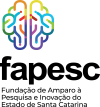INFLUENCE OF LOCUST BEAN GUM ADDITION ON PROPERTIES OF SOY PROTEIN BASED FILMS
DOI:
https://doi.org/10.19177/rgsa.v11e02022238-255Keywords:
Soy protein concentrate, Composite films, Biopolymer interactions.Abstract
Soy protein is the most important representative of legume protein and has presented high potential to manufacture films. Blends between protein and polysaccharide can to improve the performance, stability, functionality and resistance of biopolymer films in comparison to simple films. This work aims to develop composite films with soy protein isolate (SPI) and soy protein concentrate (SPC) and different locust bean gum (LBG) concentration, as well as, to evaluate the effect of polysaccharide addition on optical and mechanical properties, water vapor barrier, color, microstructure, solubility and moisture of the SPI and SPC films. For this purpose, composite films were elaborated varying LBG concentration (0; 0.05; 0.1; 0.2; 0.3; 0.4%) and fixing SPI and SPC (5%) concentration in solution. Glycerol was used in all formulations as plasticizer. Microstructure, solubility, moisture, water vapor permeability, optical and mechanical properties of the simple and composite films were evaluated. The solubility and film barrier to the light was increased in SPI films with LBG addition, but was not changed in SPC films with gum addition.All composite films presented higher tensile strength values than simple films. The lightness of composite films was smaller than simple films, however water vapor barrier was similar.Downloads
Published
2022-01-28
Issue
Section
Artigos
License

O trabalho Revista Gestão & Sustentabilidade Ambiental foi licenciado com uma Licença Creative Commons - Atribuição - NãoComercial - CompartilhaIgual 3.0 Brasil.
Com base no trabalho disponível em www.portaldeperiodicos.unisul.br.
How to Cite
INFLUENCE OF LOCUST BEAN GUM ADDITION ON PROPERTIES OF SOY PROTEIN BASED FILMS. (2022). Revista Gestão & Sustentabilidade Ambiental, 11, 238-255. https://doi.org/10.19177/rgsa.v11e02022238-255








